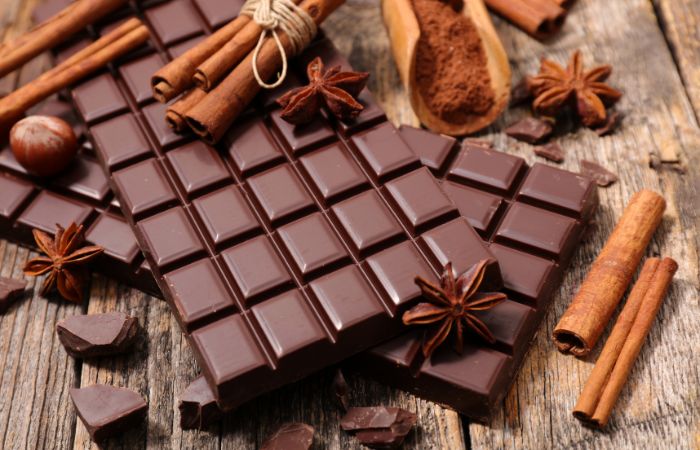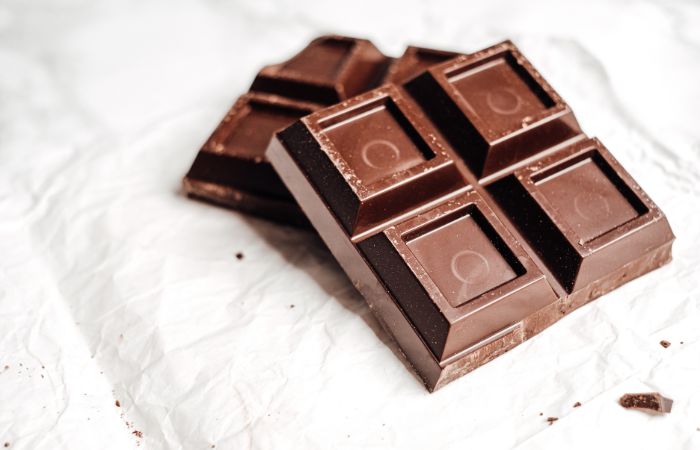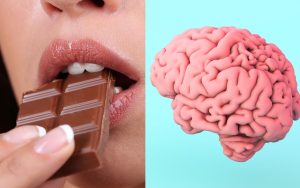Chocolate has been cherished and enjoyed by people around the world for centuries. Its rich, decadent flavor has a way of satisfying our taste buds and lifting our spirits. But have you ever wondered why chocolate holds such a special place in our hearts?

In this article, we will delve into the fascinating relationship between chocolate and our brain, exploring the science behind the pleasure mechanisms that make chocolate so irresistible. So grab a piece of your favorite chocolate bar and join us on this delectable journey through the intricate workings of our brain when it encounters the sweet delight of chocolate.
The Sensory Delight of Chocolate
Exploring the Flavor Symphony
When you take a bite of chocolate, your taste buds embark on a flavor symphony like no other. The intricate balance of sweetness, bitterness, and even hints of savory notes dance on your tongue. The blend of these flavors creates a unique and indulgent experience that tantalizes the senses. It’s a harmonious composition that draws us in and keeps us coming back for more.
The Magic of Melting Chocolate
One of the most delightful aspects of chocolate is its ability to melt in your mouth. As soon as it touches your tongue, the chocolate begins to transform into a velvety, luscious liquid. This phenomenon is no accident; it’s the result of precise temperature and fat content. The melting sensation enhances the release of flavors, allowing you to fully appreciate the complexity of the chocolate.
Texture: A Tactile Adventure
Texture plays a crucial role in the sensory experience of chocolate. Whether it’s the smoothness of a perfectly tempered chocolate bar, the creaminess of a truffle, or the satisfying crunch of a chocolate-covered nut, the tactile sensations add an extra layer of enjoyment. The mouthfeel and oral processing of chocolate contribute to the overall pleasure, triggering a cascade of sensory responses in the brain.
Unveiling the Chemical Components
Theobromine: The Energizing Stimulant
One of the key chemical components of chocolate is theobromine. It belongs to the same family as caffeine and shares similar stimulating effects on the central nervous system. Theobromine increases alertness and focus, providing a gentle energy boost. However, unlike caffeine, theobromine has a milder impact, resulting in a smoother and more prolonged effect on the brain.
Phenylethylamine: The “Love Chemical”
Phenylethylamine, often referred to as the “love chemical,” is another compound found in chocolate. This naturally occurring substance acts as a mood enhancer and is believed to contribute to the feelings of attraction and excitement. When we consume chocolate, phenylethylamine interacts with our brain’s neurotransmitters, creating a pleasurable response that can enhance our overall mood.
Serotonin: The Happiness Booster
Serotonin, often associated with feelings of happiness and well-being, plays a significant role in the brain’s response to chocolate. When we indulge in chocolate, it triggers the release of serotonin, which can elevate our mood and create a sense of contentment. The increase in serotonin levels contributes to the pleasurable and positive effects experienced after consuming chocolate.
Dopamine: The Reward System Activator
Dopamine, known as the “feel-good” neurotransmitter, is closely linked to the brain’s reward system. When we eat chocolate, dopamine is released, creating a sensation of pleasure and reinforcing the desire to continue consuming it. The activation of dopamine receptors in the brain’s reward circuitry contributes to the addictive potential of chocolate and explains its ability to bring about feelings of reward and satisfaction.

Endorphins: The Natural Feel-Good Chemicals
Endorphins are the body’s natural pain-relieving and mood-enhancing chemicals. Chocolate consumption triggers the release of endorphins, which can produce feelings of euphoria and happiness. These naturally occurring feel-good chemicals contribute to the pleasurable experience of eating chocolate and can contribute to a sense of relaxation and well-being.
Anandamide: The Bliss Molecule
Anandamide, often referred to as the “bliss molecule,” is a neurotransmitter that binds to the same receptors as THC, the active compound in cannabis. While the levels of anandamide in chocolate are relatively low, it is believed to play a role in the brain’s response to chocolate consumption. Anandamide may contribute to the pleasurable effects and cravings associated with chocolate, although further research is needed to fully understand its exact impact.
Neurotransmitters and Pleasure Pathways
Dopamine: The Reward System Activator
Dopamine, a neurotransmitter associated with pleasure and reward, plays a crucial role in the brain’s pleasure pathways. When we consume chocolate, dopamine is released, creating a surge of positive feelings and reinforcing the desire to continue indulging. This activation of dopamine receptors in the brain’s reward circuitry contributes to the pleasurable experience and the potential for chocolate to become addictive.
Endorphins: The Natural Feel-Good Chemicals
Endorphins, our body’s natural pain-relievers and mood-boosters, are also involved in the pleasure pathways related to chocolate. When we eat chocolate, endorphins are released, leading to feelings of euphoria and well-being. These natural chemicals contribute to the pleasurable experience, providing a sense of relaxation and contentment.
Serotonin: The Mood Elevator
Serotonin, often referred to as the “happiness neurotransmitter,” plays a vital role in regulating mood and emotions. Chocolate consumption triggers the release of serotonin, which can elevate our mood and create a sense of happiness and contentment. The increase in serotonin levels contributes to the pleasurable effects experienced after enjoying chocolate.
Anandamide: The Bliss Molecule
Anandamide, a neurotransmitter that binds to the same receptors as THC, the active compound in cannabis, may also be involved in the pleasure pathways of chocolate. While the levels of anandamide in chocolate are relatively low, it is believed to contribute to the pleasurable effects and cravings associated with chocolate. Further research is needed to fully understand its precise role.
Oxytocin: The Connection Builder
Oxytocin, often referred to as the “love hormone,” is associated with social bonding and feelings of trust and connection. While not directly linked to chocolate, the pleasurable experience of consuming chocolate can elicit positive emotions, potentially leading to the release of oxytocin. This can enhance feelings of happiness and strengthen social connections.
GABA: The Calming Influence
Gamma-aminobutyric acid (GABA) is an inhibitory neurotransmitter that helps regulate anxiety and stress. While not exclusive to chocolate, the pleasurable experience of enjoying chocolate can have a calming effect on the brain. The combination of sensory delight, chemical components, and pleasure pathways may contribute to a sense of relaxation and well-being facilitated by GABA.
Neuroplasticity: The Brain’s Ability to Adapt
Neuroplasticity refers to the brain’s ability to reorganize and form new connections. The pleasurable experience of eating chocolate can trigger neuroplasticity, influencing the brain’s reward circuitry and shaping our behavior and responses to pleasurable stimuli. This process reinforces the association between chocolate and pleasure, potentially leading to cravings and reinforcing the desire for more chocolate.
Individual Variations: The Brain’s Unique Response
It’s important to recognize that individual variations exist in how our brains respond to chocolate. Factors such as genetics, previous experiences, and overall brain chemistry can influence the intensity of pleasure experienced from consuming chocolate. While the general mechanisms and neurotransmitters involved are well-known, the specific response can vary from person to person, contributing to the personal enjoyment of chocolate.
The Emotional Connection
Chocolate and Emotional Comfort
Chocolate has long been associated with emotional comfort and indulgence. Many of us turn to chocolate during times of stress, sadness, or even celebration. This emotional connection stems from a combination of factors. The sensory experience, the release of pleasurable neurotransmitters, and the nostalgic memories associated with chocolate can provide a sense of comfort and temporary relief from negative emotions.
Chocolate Cravings and Addiction
While most chocolate cravings are not indicative of addiction, there is a subset of individuals who may experience addictive tendencies towards chocolate. The combination of pleasurable sensory experiences, the release of dopamine, and the potential for emotional comfort can create a psychological attachment to chocolate. However, it’s important to distinguish between cravings and addiction and to maintain a balanced approach to chocolate consumption.
The Brain’s Reward Circuitry
The brain’s reward circuitry plays a significant role in the emotional connection to chocolate. When we consume chocolate, the brain’s reward system is activated, leading to the release of dopamine and feelings of pleasure. This reinforcement strengthens the association between chocolate and reward, enhancing the emotional experience and potentially influencing our desire to seek out and consume more chocolate.

The Influence of Mood on Chocolate Cravings
Our emotional state can significantly impact our cravings for chocolate. During periods of stress, sadness, or even boredom, the desire for chocolate may intensify. This is because chocolate can act as a temporary mood booster, eliciting feelings of comfort and pleasure. The emotional connection to chocolate becomes more pronounced during these times, as we seek the positive emotions associated with its consumption.
The Power of Nostalgia and Indulgence
The emotional connection to chocolate is also intertwined with memories and indulgence. For many of us, chocolate is associated with cherished childhood moments, special occasions, or simply a well-deserved treat. These nostalgic memories enhance the emotional experience of consuming chocolate, reinforcing the feelings of joy and satisfaction. The act of indulging in chocolate can evoke a sense of indulgence and self-care.
Mindfulness and Enjoyment
In cultivating a deeper emotional connection to chocolate, practicing mindfulness and conscious enjoyment can enhance the experience. Taking the time to savor each bite, paying attention to the flavors, textures, and aromas, allows us to fully immerse ourselves in the pleasure of chocolate. Mindful consumption can heighten our appreciation and emotional connection to this beloved treat.
The Implications and Benefits
Chocolate and Cognitive Function
Emerging research suggests that chocolate consumption may have potential cognitive benefits. The presence of flavonoids, a type of antioxidant, in chocolate has been linked to improved brain health. Studies have indicated that regular intake of cocoa flavonoids may enhance memory, attention, and overall cognitive function. However, further research is needed to fully understand the extent of these benefits.
Dark Chocolate: The Power of Polyphenols
Dark chocolate, with its higher cocoa content, offers additional health benefits due to its rich concentration of polyphenols. Polyphenols are antioxidants that help combat free radicals, reducing oxidative stress and inflammation in the body. The consumption of dark chocolate has been associated with potential cardiovascular benefits, such as improved blood flow and blood pressure regulation.
Moderation and Health Considerations
While chocolate does offer potential benefits, it’s crucial to consume it in moderation. Chocolate is calorie-dense and can contribute to weight gain if consumed excessively. Additionally, individuals with certain health conditions, such as diabetes or allergies, should be mindful of their chocolate intake and consider any specific dietary restrictions or recommendations from healthcare professionals.
Enjoying Chocolate as Part of a Balanced Diet
Incorporating chocolate into a balanced diet is key to enjoying its benefits while maintaining overall health. Opting for dark chocolate with higher cocoa content provides a greater concentration of beneficial compounds. Pairing chocolate with other nutrient-rich foods, such as fruits or nuts, can create a more balanced and satisfying snack. Balancing indulgence with mindful portion control supports a healthy approach to chocolate consumption.
The Pleasure of Chocolate: Mental and Emotional Well-Being
Beyond its potential physical health benefits, chocolate can contribute to mental and emotional well-being. The pleasurable experience of eating chocolate, the release of feel-good neurotransmitters, and the emotional connection it elicits can provide moments of joy and relaxation. Enjoying chocolate mindfully, as part of self-care and self-indulgence, can positively impact our overall well-being and bring moments of happiness into our lives.
Exploring the Boundaries of Chocolate Research
While significant progress has been made in unraveling the pleasure mechanisms and potential benefits of chocolate, there is still much to learn. Ongoing research continues to explore the complex interactions between chocolate, the brain, and overall health.
By delving deeper into these relationships, we can gain a more comprehensive understanding of the implications and potential future applications of chocolate in various aspects of our lives.
Conclusion
As we conclude our exploration into the pleasure mechanisms of chocolate on the brain, it becomes clear that there is indeed a profound and intricate relationship between these two entities. From the initial sensory experience of taste and aroma to the chemical reactions and release of neurotransmitters, chocolate has the power to captivate our brains and enhance our mood. Theobromine and phenylethylamine contribute to the pleasurable effects, while serotonin and endorphins elevate our feelings of happiness and well-being.








